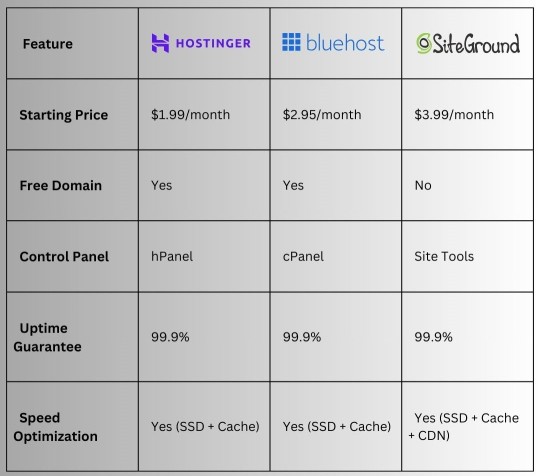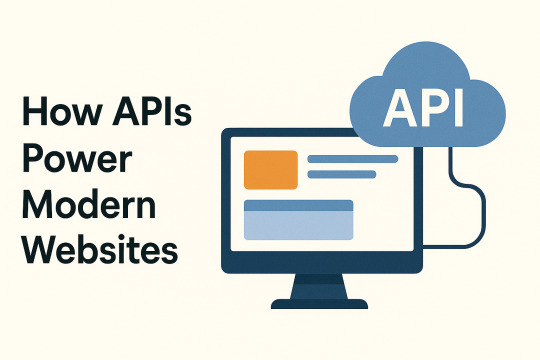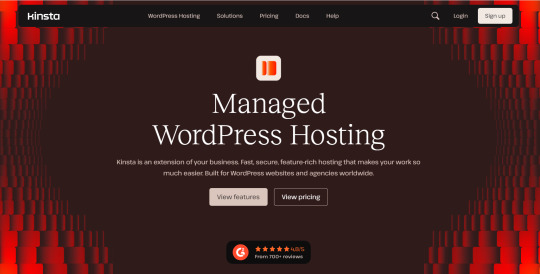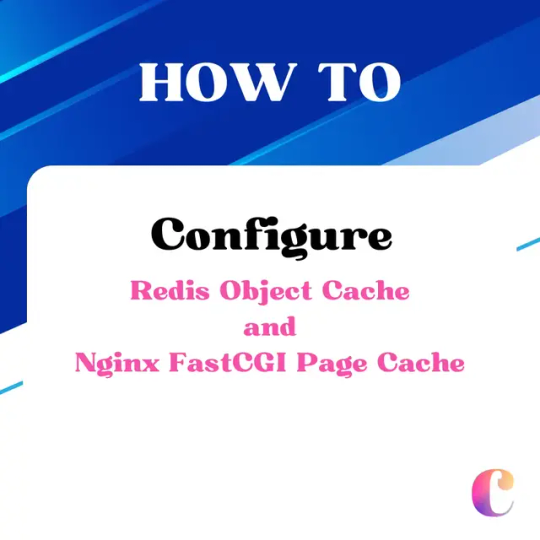#Redis Cache for WordPress
Explore tagged Tumblr posts
Text
Advanced WordPress Caching

Speed is important in the fast-paced world of online presence. Users expect websites to load in the blink of an eye, and search engines reward faster sites with better rankings. If you’re a WordPress enthusiast, you probably already know how crucial caching is to maximising the functionality of your website. We’ll explore sophisticated WordPress caching strategies in this blog post, which can significantly increase the speed of your website.
#WordPress Caching#Advanced Caching Techniques#Browser Caching#Browser Caching in WordPress#CDN Integration for WordPress Caching#Fragment Caching#JNext#JNext Services#Object Caching in WordPress#Opcode Caching for WordPress#Page Caching Best Practices#Performance Optimization with WordPress Caching#Redis Cache for WordPress#Server-Side Caching in WordPress#Speeding up WordPress Sites#Tuning Database Caching in WordPress#WordPress Cache Management Tips
0 notes
Text
Unbeatable Value: Why Hostinger is the Best Choice for Affordable Web Hosting

Did you know Hostinger now offers a Biggest ever Black Friday sale Up to 85% off hosting + website builder + Extra Flat 20% discounts on all hosting plans? This amazing deal shows Hostinger's strong commitment to quality and value. They want to help everyone, from small businesses to website dreamers, without costing too much.
Key Takeaways
Hostinger offers an unbeatable Extra Flat 20% discount on all hosting plans
Hostinger is a top-rated web hosting provider known for its affordable yet reliable services
Hostinger's hosting plans cater to a wide range of users, from small businesses to large enterprises
Hostinger's commitment to quality and performance ensures a seamless online experience
Hostinger's user-friendly interface and extensive features make website management a breeze
Understanding Hostinger's Web Hosting Services
Hostinger has many website hosting plans for businesses and people. They offer budget-friendly hosting and WordPress optimized hosting too.
Shared Hosting Solutions
Hostinger's shared hosting is great for beginners or small sites. It's budget-friendly with weekly backups, free SSL, and 24/7 support.
Cloud Hosting Options
Hostinger's cloud hosting is scalable and strong. It has instant resources, automatic backups, and top security. It's perfect for growing businesses.
WordPress Specialized Hosting
Hostinger has WordPress optimized hosting for WordPress users. It comes with WordPress pre-installed, automatic updates, and server tweaks for smooth running.
Hostinger has many website hosting plans for all needs. They focus on being affordable, fast, and reliable. They aim to make customers happy and keep improving.
Why Hostinger is the Best Choice for Affordable Web Hosting

Biggest ever Black Friday sale
Up to 85% off hosting + website builder + Extra Flat 20% discounts
Hostinger is great for reliable hosting that's easy on your wallet. It offers fast web hosting at a good price. This makes it a favorite for both businesses and individuals.
Hostinger is known for its affordable prices without losing quality. It uses the latest tech and efficient systems. This means you get lots of features for a low cost.
But it's not just about the price. Hostinger focuses on speed and has a big network of data centers. Your site will load fast and work well everywhere. This makes your site better for visitors and helps your business grow.
"Hostinger's reliable hosting and lightning-fast speeds have been a game-changer for my business. It's the perfect balance of affordability and top-notch performance."
Hostinger also has an easy-to-use interface and lots of tools. You can easily set up your site with one-click installers and website builders. This makes it simple for anyone to start their online presence.
Hostinger is good for anyone, from small businesses to big companies. Its cheap web hosting offers great value. It's the best choice for affordable web hosting without losing quality.
Cutting-Edge Performance and Speed Features
At Hostinger, we know fast web hosting is key for a great user experience. We've got top-notch features to make your websites super fast. Our LiteSpeed web servers, global data centers, and caching solutions make sure your fast web hosting needs are met.
LiteSpeed Web Servers
Our web hosting uses LiteSpeed web servers. They're super efficient and handle lots of traffic well. Your websites will load fast, giving your visitors a smooth and secure hosting services experience.
Global Data Center Network
Our data centers are all over the world. This means your websites are close to your visitors. You get faster load times and a better user experience, no matter where they are.
Built-in Caching Solutions
Our web hosting plans have advanced caching solutions that boost your website's speed.
LiteSpeed Cache and Redis Cache reduce server load and page load times. Your visitors will have a smooth experience.
These caching solutions work in the background. They make sure your website is always fast, without you having to do anything.
With Hostinger's top performance and speed features, your websites will load super fast. This will make your online presence shine and give your visitors a great experience.
Security and Reliability Measures
At Hostinger, we know how important it is to keep your website safe and running well. That's why we have many security features and ways to keep your site up and running. This helps your business grow and succeed online.
Robust DDoS Protection
Our hosting services have strong DDoS protection. This keeps your website safe from bad attacks that could stop it from working. Our system watches for and blocks bad traffic, so your site stays open and your customers happy.
Secure SSL Certificates
All our plans include free SSL certificates. This means your website's data and talks are safe from others seeing them. It's key for making your visitors trust you and keeping their private info safe.
Reliable Data Backup and Restoration
Hostinger backs up your website data often, so you're safe if something goes wrong or data gets lost.
With just one click, you can bring back your website to a time before problems started. This cuts down on lost time and keeps your business running smoothly.
Uptime Guarantee
We're proud of how reliable our hosting is, which is why we promise 99.9% uptime. This means your website will be open for your customers all the time. You can focus on making your online business bigger without worrying about it going down.
At Hostinger, we're all about giving you safe and reliable hosting. Our strong security and dependable setup mean your website is in great hands. This lets you focus on making your online business a success.
User-Friendly Interface and Website Management Tools
At Hostinger, we know web hosting can be hard for some. Especially for those new to the web. That's why we made our control panel and website management tools easy to use. Now, anyone can create and manage their website easily.
hPanel Control Panel Overview
Our hPanel is a dashboard that lets you control your web hosting. It's easy to use and navigate. You can manage your domains, websites, and emails all in one place.
Whether you're a pro or new to websites, hPanel makes it easy. It helps you work smoothly and efficiently.
One-Click Installers
Hostinger's one-click installers make it easy to set up CMS like WordPress, Joomla, and Drupal.
With just a few clicks, you can start your WordPress-optimized hosting and bring your ideas to life.
No need for technical skills. Our tools do the hard work, so you can focus on your website.
Website Builder Integration
For those who like a guided website creation, Hostinger has a website builder. It lets you make professional-looking websites without coding. You can build a blog, store, or corporate site easily and enjoyably.

Feature
Benefit
User-friendly control panel
Streamlined website management and easy access to all your hosting tools
One-click installers
Quickly set up popular CMSs like WordPress with no technical expertise required
Integrated website builder
Design professional-looking websites using a drag-and-drop interface
At Hostinger, we want to help our customers succeed online. Our easy-to-use interface and website management tools make hosting smooth, no matter your skill level. Start your online journey with Hostinger today.
Pricing Plans and Special Offers
Hostinger is a top choice for cheap web hosting and budget-friendly hosting. They offer many website hosting plans to fit different needs.
Now, Hostinger has a Biggest ever Black Friday sale
Up to 85% off hosting + website builder + Extra Flat 20% discounts
on all plans. This makes their prices even better for those looking for cheap web hosting.
Shared Hosting Plans
Hostinger's shared hosting starts at $0.99 per month. It's ideal for small businesses and individuals. You get a free domain, SSL, and lots of storage and bandwidth.
Cloud Hosting Solutions
For more power, Hostinger's cloud hosting is great. Prices range from $3.99 to $15.99 per month. It's perfect for growing businesses and big websites.
WordPress Specialized Hosting
Hostinger has special plans for WordPress users. Starting at $1.99 per month, they're optimized for WordPress. This means your WordPress site will run smoothly.
Hostinger has many website hosting plans for all budgets. With the
Extra Flat 20% discounts , it's a great choice for affordable web hosting.
Conclusion
Hostinger is the top pick for affordable web hosting. It offers fast performance and strong security. Plus, it's easy to use.
Hostinger has many hosting options. You can choose from shared, cloud, or WordPress hosting. It also has 24/7 support and special deals.
Hostinger is dedicated to giving you the best web hosting experience. Choose Hostinger for a great start online. You'll be in good hands.
FAQ
What makes Hostinger the best choice for affordable web hosting?
Hostinger offers great hosting at low prices. It's perfect for those who want reliable and cheap web hosting. Their value, performance, and easy-to-use interface make Hostinger a top pick.
What types of hosting services does Hostinger offer?
Hostinger has many hosting services. You can choose from shared hosting, cloud hosting, or WordPress hosting. Each type meets different needs, so you're sure to find what you need.
How does Hostinger ensure fast and reliable performance?
Hostinger uses fast web servers and a global network. They also have caching solutions. These features make your website load quickly and perform well.
What security and reliability measures does Hostinger have in place?
Hostinger focuses on security and reliability. They have DDoS protection, SSL certificates, and backups. They also guarantee your website will be up and running.
How user-friendly is Hostinger's hosting platform?
Hostinger's platform is easy to use. It has a simple control panel and one-click installers. It's great for anyone to manage and grow their website.
What are Hostinger's pricing plans and special offers?
Hostinger has plans for every budget. They offer shared, cloud, and WordPress hosting. They also have special deals, like a 20% discount now.
Does Hostinger provide 24/7 customer support?
Yes, Hostinger's support team is available all the time. They can help with setup, problems, or account management. Their experts are ready to assist you.
3 notes
·
View notes
Text
AEserver UAE - .ae Domains & Web Hosting Provider
AEserver is not just a hosting provider. It is the mainstay of the UAE's digital infrastructure, focused on entrepreneurs, startups, international brands, and ambitious technology projects that need stable, predictable results rather than abstract "support." Since 2005, AEserver has been providing hosting in the UAE with legal registration, DED license, full localization and SLA, where uptime is kept at 99.9%. And all this is not on paper.
The company's data center is located in Dubai. Not just anywhere, but right in the key technological zone of the region, closer to the customer, closer to the user, closer to the traffic entry point. This means fewer delays, higher throughput, and more control. Inside there are dedicated servers with NVMe, VPS virtual machines with custom configuration, cloud solutions with vertical scaling and fault tolerance. All servers are monitored, with automatic updates, overheating protection, and backup power supplies.
Security? Yes, at the infrastructure level: BitNinja, SSL certificates, firewall, white-list IP, database encryption, two-factor authentication. Access control and rights settings via SSH/SFTP are implemented flexibly. Control panels are supported: cPanel, DirectAdmin, ISPmanager. Redis, Memcached, and Varnish caching systems are enabled by default on advanced plans. For working with content — LAMP/LEMP stacks, Apache, NGINX, PHP-FPM, MySQL, MariaDB. And all this is easily connected to a CMS, including WordPress.
In AEserver, you can register a domain in the zone.ae, get a free domain when activating the tariff, connect business mail, transfer the site from another hosting without downtime. There is multisite support, tariff plans for different types of workloads, and, importantly, flexible billing with an Islamic payment method and support for cryptocurrencies. Support works 24/7 through the ticket system — quickly, to the point, with attention to the technical essence.
AEserver is more than a web hosting service. This is a service with a human face and iron discipline in the server room. This is an opportunity to scale a startup in Dubai, comply with legal requirements, work legally and stably, without losing either speed or flexibility. This is where IT becomes a pillar of business, not a headache.
#hosting uae#provider#domain ae#domain online#domain uae#domain provider#server hosting#domain#web hosting#ae domain#.ae domain#ae domains#uae domains#uae domain name#buy uae domain#buy .ae domain#buy ae domain#register .ae domain#buy ae domain name#premium domains#ae domain registration#purchase ae domain#ae website domain#domain name#buy domain#domain checker#domain search#what is domain#domain registration#Web Hosting Provider
0 notes
Video
youtube
How To Add Redis Object Cache In WordPress To Speed Up Your Site https://www.youtube.com/watch?v=nLquta9N0go 🚀💡🎬 #Speed #Redis #Object #Cache #WordPress
0 notes
Text
How APIs Power Modern Websites – A Think To Share IT Solutions Insight

Modern websites are no longer static brochures. They’re dynamic, data-driven platforms that interact with various services in real time. At the core of this interactivity lies a powerful and essential component: the API, or Application Programming Interface.
At Think To Share IT Solutions, we engineer websites that aren’t just visually compelling—they’re functionally superior, thanks to smart API integrations that enable real-time performance, seamless communication, and scalable features.
What is an API?
An API (Application Programming Interface) is a set of protocols and tools that allow software applications to communicate with each other. In web development, APIs act as bridges that connect your website to external or internal systems.
Instead of building every function from scratch, APIs allow developers to integrate existing, trusted services—making websites faster, more reliable, and more scalable.
How APIs Power Modern Websites
1. Dynamic Content Delivery
APIs allow websites to fetch and display real-time content from a database or CMS without refreshing the page. This improves performance and user experience.
Example: A blog or news portal pulling updated articles from a headless CMS like Strapi or WordPress via REST API.
2. User Authentication and Access Control
APIs handle secure user logins and permission-based access. Authentication services like Google OAuth or Auth0 rely entirely on API interactions.
Example: "Sign in with Google" uses an external API to verify the user's identity securely without storing sensitive data on your own servers.
3. Third-Party Service Integrations
APIs enable seamless integration with third-party platforms for added functionality.
Function
API Providers
Payments
Stripe, Razorpay, PayPal
Email Marketing
Mailchimp, SendGrid
Analytics
Google Analytics, Matomo
Customer Support
Zendesk, Intercom
Maps & Location
Google Maps API, Mapbox
These integrations enhance user experience without compromising performance or security.
4. Real-Time Features and Updates
Websites that support live chat, order tracking, or instant notifications use APIs to communicate with real-time databases.
Example: Firebase and Pusher APIs power real-time chat interfaces or live delivery status updates.
5. E-Commerce Functionality
Modern eCommerce websites rely on APIs to handle inventory updates, pricing changes, order processing, and shipping logistics.
What We Implement:
Cart management via REST or GraphQL APIs
Real-time pricing and availability updates
Shipment tracking using courier APIs (e.g., Delhivery, Shiprocket)
6. Headless Architecture
In a headless setup, APIs serve as the communication layer between the front-end and the back-end. This decoupling improves performance and allows for more flexible design and delivery across platforms.
Example: Using Next.js (for the front-end) and Strapi or Sanity (as the headless CMS), data is fetched via API endpoints and rendered statically or server-side for speed and SEO.
Benefits of API-Driven Web Development
Benefit
Explanation
Faster Deployment
Plug in pre-built services instead of coding everything from scratch
Scalability
Easily add new features or services without overhauling your system
Enhanced Security
Offload sensitive functions like payments to trusted platforms
Maintainability
Isolated services reduce complexity and ease troubleshooting
Cross-Platform
Share the same API with mobile apps, web apps, and IoT devices
How Think To Share Implements API-Driven Architecture
Our development process incorporates API planning from the very beginning:
Architecture Planning: Identify necessary APIs based on business goals
Security: Implement OAuth2, JWT tokens, and rate limiting for secure access
Performance: Use caching mechanisms (Redis, CDN) to reduce API load
Monitoring: Set up logging, error tracking, and fallback handling for resilience
Documentation: Provide detailed API docs using tools like Swagger or Postman
Final Thoughts: APIs Are the Backbone of Modern Websites
APIs have evolved from technical add-ons to mission-critical infrastructure for digital platforms. Whether you're running a website, mobile app, or enterprise software, APIs allow you to build faster, scale smarter, and connect deeper with users.
At Think To Share IT Solutions, we design and develop high-performance web systems that are modular, connected, and built for long-term growth—powered by reliable, secure, and well-integrated APIs.
0 notes
Text
💥 Lỗi Redis class not found – Redis PHP Extension chưa cài 💥
💥 Lỗi Redis class not found – Redis PHP Extension chưa cài 💥 👉 Lỗi này xảy ra khi PHP chưa có cài extension Redis mà website WordPress hoặc Laravel đang gọi hàm như new Redis() hoặc wp_cache_set() khi Redis cache được bật. 🛠️ 1. Cài Đặt Redis PHP Extension Cho AlmaLinux / CentOS 8+ sudo dnf install php-pecl-redis -y Nếu bạn đang dùng phiên bản PHP cụ thể (ví dụ PHP 8.1), hãy dùng đúng tên…
0 notes
Text
Senior Full Stack Developer
) and PHP (Laravel/WordPress/custom frameworks). Work with Redis for caching, session management, and queuing to improve…: Frontend: React, TypeScript, TailwindCSS/Styled Components Backend: Python (Django/FastAPI/Flask), PHP (Laravel/WordPress… Apply Now
0 notes
Text
How We Handled Performance Issues in a Legacy WordPress Site
Legacy WordPress websites often come with performance challenges—outdated themes, bloated plugins, and poor hosting setups. We recently worked on a project involving a legacy WordPress site that was not only slow but also unstable under moderate traffic. The client, a content-heavy platform with thousands of daily users, needed a fast, reliable solution without completely rebuilding the site from scratch.
As one of the experienced WordPress development companies, we approached this project with a structured plan to address the root causes of the performance bottlenecks while preserving existing content and functionality.
Initial Audit and Diagnosis
The first step was a comprehensive performance audit. We evaluated:
Core Web Vitals
Page Load Speed
Database Queries
Theme and Plugin Efficiency
Hosting Configuration
The findings revealed a combination of outdated plugins, a heavily customized (and inefficient) theme, and unoptimized media assets—all contributing to the site’s sluggish performance.
Optimization Strategies We Applied
1. Database Cleanup and Query Optimization
Legacy WordPress sites tend to accumulate clutter in the database—post revisions, transients, orphaned metadata. We cleaned the database and optimized queries, especially on high-traffic pages, to reduce server response times.
2. Replacing Inefficient Plugins
Several installed plugins were redundant or poorly coded. We replaced these with lighter, more modern alternatives, carefully ensuring that no functionality was lost in the process.
3. Theme Refactoring
Instead of rewriting the theme from scratch, we refactored parts of the existing codebase to remove unnecessary scripts, deferred non-critical JavaScript, and optimized CSS delivery.
4. Image and Media Optimization
The site contained thousands of uncompressed images. We used image optimization tools and implemented lazy loading for off-screen images to cut down initial load time.
5. Advanced Caching Solutions
We integrated server-side and client-side caching using tools like Redis and a robust caching plugin, greatly improving page load speeds for repeat visitors.
Why Experience Matters in Legacy Projects
Handling legacy systems requires more than just technical skill—it calls for strategic thinking and caution. Making changes without disrupting the current setup is a delicate balance. This is where trusted WordPress development companies in USA come in. Their experience with older codebases, combined with up-to-date optimization practices, makes a big difference.
The client partnered with one of the top WordPress development agencies in USA known for handling complex legacy WordPress issues. This partnership enabled faster problem resolution and future-proofing of the website for growth.
Final Results
After the optimization work:
Page load times decreased by over 60%
Bounce rates dropped significantly
SEO scores improved due to better Core Web Vitals
The site was now stable, even during peak hours
Conclusion
Legacy WordPress sites don’t have to be rebuilt from scratch to perform well. With a thorough audit and the right technical solutions, they can be transformed into fast, efficient platforms. Collaborating with reliable WordPress development companies, especially experienced WordPress development companies in India, ensures a well-executed, cost-effective approach that extends the life of an existing site without compromising on performance.
0 notes
Text
Understanding Caching Strategies for Faster Web Applications
In today’s fast-moving digital world, website speed plays a crucial role in user experience and search rankings. A slow-loading website can frustrate visitors and drive them away. One effective way to speed up web applications is through caching. But what exactly is caching, and how can it help improve website performance? Let’s break it down in simple terms.
What is Caching?
Caching is the process of storing frequently accessed data in a temporary storage space, so it can be quickly retrieved when needed. Instead of fetching information from the main database every time a user visits a site, cached data allows for faster access, reducing load times and server strain.
Why is Caching Important for Web Applications?
Speeds up website performance – Cached content loads faster, improving user experience.
Reduces server load – Fewer requests to the main database mean less processing power is needed.
Enhances scalability – Websites can handle more visitors without slowing down.
Improves SEO ranking – Faster websites perform better in search engine results.
Common Caching Strategies
There are several caching methods used to optimize web applications. Choosing the right approach depends on your website’s needs and traffic patterns.
1. Browser Caching
Browser caching stores static files like images, CSS, and JavaScript on a user’s device. The next time they visit the site, their browser loads these files locally instead of downloading them again. This reduces page load time significantly.
Best for: Websites with returning visitors.
How to implement: Set expiration headers in the website’s .htaccess file or use a content delivery network (CDN).
2. Page Caching
Page caching stores fully rendered web pages on the server. When a user requests a page, they receive a pre-generated version instead of processing it from scratch.
Best for: Blogs, news websites, and content-heavy platforms.
How to implement: Use caching plugins (for CMS platforms like WordPress) or configure caching settings in the web server.
3. Object Caching
Object caching saves the results of database queries, preventing repetitive data retrieval. This method is useful for dynamic websites that frequently fetch information from a database.
Best for: eCommerce platforms and membership-based websites.
How to implement: Use caching solutions like Memcached or Redis.
4. CDN Caching
A Content Delivery Network (CDN) caches website content on multiple servers worldwide. This ensures users can load pages from a nearby server instead of relying on the original server, improving speed and reliability.
Best for: Global websites with high traffic.
How to implement: Use CDN services like Cloudflare, Akamai, or Amazon CloudFront.
5. Database Caching
Database caching stores frequently used queries, reducing the need for repeated database calls. This helps improve performance, especially for sites with large amounts of data.
Best for: Large-scale applications and data-heavy websites.
How to implement: Configure database settings or use caching tools like Redis and MySQL query caching.
How to Choose the Right Caching Strategy
The best approach depends on your website’s structure, traffic volume, and the type of content you deliver. A combination of different caching techniques often yields the best results.
For static content: Browser caching and page caching work well.
For dynamic websites: Object caching and database caching help speed up data retrieval.
For global audiences: CDN caching ensures fast content delivery.
Common Caching Challenges and Solutions
While caching significantly improves speed, it can sometimes cause issues if not managed properly. Here are some common problems and how to fix them:
Stale Content: Cached versions of a page might not update immediately after changes.
Solution: Use cache expiration policies or enable cache purging.
Storage Limitations: Overloaded caches can slow down performance.
Solution: Set cache size limits and use automated cleanup.
Cache Invalidation Issues: If outdated data remains in the cache, users may see incorrect information.
Solution: Implement cache versioning or manual refresh options.
The Role of Web Development Agencies in Caching Optimization
Many businesses rely on expert guidance to implement caching effectively. Some of the best web development agencies in India specialize in optimizing caching strategies to enhance website performance. These agencies analyze website traffic, content structure, and database interactions to design a caching system that delivers optimal results.
Final Thoughts
Caching is an essential technique for improving website speed and efficiency. By selecting the right caching strategy, businesses can provide a seamless experience to users while reducing server costs. Whether you’re running a small blog or a large-scale eCommerce platform, implementing caching can make a significant difference in performance.For businesses looking to maximize their website’s speed and user experience, partnering with one of the best web development agencies in India can help ensure proper caching implementation and long-term success.
#website development company in india#web design company india#website designing company in india#best web development agencies india#digital marketing agency india#online reputation management companies in india
0 notes
Text
Bật Mí Cách Thuê Cloud VPS Giá Rẻ Mà Không Lo Lag!
Cloud VPS giá rẻ là lựa chọn phổ biến cho các doanh nghiệp nhỏ, website cá nhân và các dự án cần hiệu suất ổn định nhưng vẫn tiết kiệm chi phí. Tuy nhiên, không phải Cloud VPS giá rẻ nào cũng đảm bảo tốc độ nhanh và độ ổn định cao. Nếu không lựa chọn cẩn thận, bạn có thể gặp phải tình trạng lag, downtime hoặc bảo mật kém. Bài viết này sẽ bật mí cách thuê Cloud VPS giá rẻ mà không lo lag, giúp bạn có trải nghiệm tốt nhất mà không tốn quá nhiều tiền.
Lợi Ích Của Cloud VPS Giá Rẻ
Trước khi đi vào cách lựa chọn, hãy cùng điểm qua một số lợi ích của Cloud VPS giá rẻ:
Chi phí tiết kiệm: So với VPS truyền thống hoặc máy chủ riêng, Cloud VPS có giá rẻ hơn nhưng vẫn đảm bảo tài nguyên ổn định.
Tài nguyên linh hoạt: Bạn có thể dễ dàng nâng cấp RAM, CPU, băng thông mà không cần di chuyển dữ liệu.
Hiệu suất ổn định: Nếu chọn đúng nhà cung cấp, Cloud VPS giá rẻ vẫn có thể đảm bảo tốc độ nhanh và uptime cao.
Quản lý dễ dàng: Các nhà cung cấp Cloud VPS thường tích hợp bảng điều khiển giúp quản lý dễ dàng ngay cả với người không chuyên.
Cách Thuê Cloud VPS Giá Rẻ Mà Không Lo Lag
Chọn Nhà Cung Cấp Uy Tín
Một số nhà cung cấp VPS giá rẻ thường sử dụng phần cứng kém chất lượng hoặc overselling tài nguyên, khiến máy chủ bị chậm. Do đó, bạn nên chọn những nhà cung cấp có đánh giá tốt, uy tín và lâu năm trên thị trường như:
Vultr
Linode
DigitalOcean
OVH
AZDIGI (Việt Nam)
Trước khi đăng ký, hãy đọc các bài đánh giá từ người dùng thực tế để đảm bảo chất lượng dịch vụ.
Xác Định Nhu Cầu Của Bạn
Để tránh lãng phí tài nguyên hoặc thuê VPS không đủ mạnh gây lag, hãy xác định nhu cầu cụ thể của bạn:
Chạy website WordPress: Nên chọn Cloud VPS có ít nhất 2 CPU, 2GB RAM, SSD NVMe.
Chạy server game: Yêu cầu CPU mạnh, RAM từ 4GB trở lên.
Lưu trữ dữ liệu lớn: Cần dung lượng ổ cứng cao, ưu tiên SSD tốc độ nhanh.
Kiểm Tra Vị Trí Data Center
Nếu bạn thuê Cloud VPS để phục vụ khách hàng tại Việt Nam, hãy ưu tiên các máy chủ có data center gần Việt Nam như Singapore, Hong Kong hoặc đặt tại Việt Nam. Điều này giúp giảm độ trễ (ping thấp) và cải thiện tốc độ tải trang.
Chọn VPS Có SSD NVMe Và Băng Thông Cao
Ổ cứng SSD NVMe có tốc độ đọc/ghi nhanh hơn gấp nhiều lần so với SSD thường, giúp tăng tốc độ xử lý dữ liệu. Bên cạnh đó, hãy kiểm tra băng thông (bandwidth) của VPS, vì băng thông thấp có thể gây lag khi truy cập nhiều.
Tránh Overselling Tài Nguyên
Một số nhà cung cấp VPS giá rẻ bán quá nhiều tài nguyên trên cùng một máy chủ vật lý, khiến hiệu suất giảm mạnh khi có nhiều người dùng hoạt động cùng lúc. Bạn có thể kiểm tra bằng cách tìm kiếm cụm từ "overselling VPS" + tên nhà cung cấp để xem đánh giá từ cộng đồng.
Kiểm Tra Chính Sách Hỗ Trợ Kỹ Thuật
Khi sử dụng VPS, đôi khi bạn có thể gặp sự cố cần sự trợ giúp từ đội ngũ kỹ thuật. Vì vậy, hãy ưu tiên các nhà cung cấp có dịch vụ hỗ trợ nhanh chóng, 24/7 qua live chat hoặc ticket.
Dùng Thử Trước Khi Quyết Định
Một số nhà cung cấp VPS có chính sách dùng thử hoặc hoàn tiền nếu không hài lòng. Hãy tận dụng điều này để kiểm tra chất lượng trước khi cam kết lâu dài.
Cách Tối Ưu Cloud VPS Để Giảm Lag
Ngoài việc chọn nhà cung cấp tốt, bạn cũng có thể tối ưu VPS để tăng hiệu suất:
Sử dụng hệ điều hành nhẹ như Ubuntu Server thay vì Windows nếu không cần GUI.
Cài đặt bộ nhớ đệm (cache) như Redis hoặc Memcached để giảm tải database.
Giới hạn số lượng tiến trình chạy nền để tối ưu tài nguyên.
Sử dụng CDN như Cloudflare để giảm tải cho VPS.
Kết Luận
Thuê Cloud VPS giá rẻ mà không lo lag hoàn toàn có thể nếu bạn biết cách lựa chọn và tối ưu. Hãy chọn nhà cung cấp uy tín, xác định đúng nhu cầu, ưu tiên data center gần và sử dụng SSD NVMe để đảm bảo hiệu suất tốt nhất. Nếu bạn đang tìm kiếm một giải pháp VPS giá rẻ, hãy áp dụng ngay các mẹo trên để có trải nghiệm mượt mà, ổn định!
Tham khảo thêm: https://vndata.vn/cloud-vps-gia-re/
0 notes
Text
How to Improve Your Website Speed for SEO

Website speed plays a crucial role in both user experience and search engine optimisation (SEO). A fast-loading site keeps visitors engaged, reduces bounce rates, and improves rankings on search engines like Google. If your website is slow, you may be losing potential customers and rankings to competitors.
In this guide, we’ll explore why website speed matters for SEO and provide actionable steps to improve your site’s performance.
How to Improve Your Website Speed
1. Optimise Images
Large image files can slow down your website. Use tools like TinyPNG or ShortPixel to compress images without compromising quality. Also, use modern formats like WebP for better compression.
2. Enable Browser Caching
Browser caching stores website resources (like images and scripts) so returning visitors experience faster load times. Configure caching through your server settings or use plugins like WP Rocket for WordPress sites.
3. Minimise HTTP Requests
Reduce the number of elements loaded on a page, such as scripts, images, and stylesheets. Combining CSS and JavaScript files can help decrease load times.
4. Use a Content Delivery Network (CDN)
A CDN distributes your website’s content across multiple servers worldwide, reducing the distance data needs to travel. Popular CDN services include Cloudflare, BunnyCDN, and StackPath.
5. Optimise Your Hosting Plan
Choosing a reliable hosting provider is essential. If your site is slow, consider upgrading to a better hosting plan, such as VPS or dedicated hosting, instead of shared hosting.
6. Implement Lazy Loading
Lazy loading defers the loading of images and videos until they are needed. This improves initial page load speed and overall user experience.
7. Reduce Server Response Time
A slow server can significantly impact load times. Ensure your hosting provider offers fast response times and consider using a server-side caching solution like Redis or Memcached.
8. Minify CSS, JavaScript, and HTML
Minification removes unnecessary characters (such as spaces and comments) from your site’s code, making it load faster. Tools like UglifyJS and CSSNano can help with this.
9. Remove Unused Plugins and Scripts
Too many plugins and scripts can slow down your website. Regularly audit and remove unnecessary plugins, especially on WordPress sites.
10. Enable Gzip Compression
Gzip compression reduces the size of your files before sending them to a visitor’s browser. This can significantly decrease page load times.
Why Website Speed Matters for SEO
1. Google Uses Speed as a Ranking Factor
Google has made it clear that page speed is an important ranking factor, particularly with Core Web Vitals updates. Websites that load faster provide a better experience, leading to improved rankings.
2. Better User Experience
Users expect web pages to load within two to three seconds. Slow-loading sites lead to frustration, increased bounce rates, and lower conversions.
3. Higher Conversion Rates
Studies show that a one-second delay in page load time can reduce conversions by up to 7%. A faster website ensures users stay engaged and complete desired actions, such as making a purchase or filling out a contact form.
FAQs
How do I test my website speed? You can test your website speed using tools like Google PageSpeed Insights, GTmetrix, and Pingdom. These tools provide detailed reports and suggestions for improvement.
What is a good website speed for SEO? Ideally, your website should load within two to three seconds. Google recommends a Largest Contentful Paint (LCP) score of under 2.5 seconds for a good user experience.
Does website speed affect mobile rankings? Yes, Google prioritises mobile-friendly and fast-loading websites for mobile search rankings. Ensure your site is optimised for mobile users.
How often should I check my website speed? Regularly monitor your site speed at least once a month or whenever you make significant changes to your website.
Can website speed affect conversion rates? Absolutely. Faster websites lead to better user engagement and higher conversion rates. A slow site can cause visitors to leave before taking action.
Need Help Improving Your Website Speed?
If you need expert assistance in optimising your website speed for SEO, our team at Inflowen can help. We provide professional SEO services in York and beyond. Get in touch with us today to boost your site performance and rankings.
Explore our SEO services in York
0 notes
Text
How to Optimize Website Loading Speed for Better User Engagement

How to Optimize Website Loading Speed for Better User Engagement
Introduction
Why website speed matters for user experience and engagement.
Impact on bounce rates, SEO rankings, and conversions.
Brief mention of tools to measure speed (Google PageSpeed Insights, Lighthouse, GTmetrix).
1. Measuring Website Performance
How to use Google PageSpeed Insights and interpret the results.
Importance of Core Web Vitals (Largest Contentful Paint, First Input Delay, Cumulative Layout Shift).
Using GTmetrix, Lighthouse, and WebPageTest for deeper insights.
2. Optimizing Images and Media
Use next-gen formats (WebP, AVIF) instead of PNG/JPEG.
Implement lazy loading (loading="lazy").
Compress images using tools like TinyPNG, ImageOptim.
Serve responsive images with srcset for different screen sizes.
3. Minimizing HTTP Requests
Reduce the number of external scripts, fonts, and stylesheets.
Combine CSS and JavaScript files where possible.
Use icon fonts or SVGs instead of multiple image icons.
4. Implementing Efficient Caching
Enable browser caching using .htaccess or response headers.
Use a Content Delivery Network (CDN) to serve assets globally (Cloudflare, Amazon CloudFront).
Optimize caching rules for static content (CSS, JS, images).
5. Reducing JavaScript and CSS Blocking
Minify JavaScript and CSS using Terser, UglifyJS, or CSSNano.
Defer or asynchronously load JavaScript (async and defer attributes).
Remove unused CSS with tools like PurifyCSS or UnCSS.
6. Optimizing Server Performance
Upgrade to faster hosting (VPS, Cloud Hosting, or Managed WordPress hosting).
Enable Gzip or Brotli compression to reduce file sizes.
Implement HTTP/2 or HTTP/3 for faster multiplexed connections.
7. Database Optimization
Optimize database queries and indexes for better efficiency.
Use caching mechanisms like Redis or Memcached.
Regularly clean up unused data, revisions, and logs in CMS platforms like WordPress.
8. Mobile Performance Optimization
Ensure responsive design and mobile-friendly assets.
Minimize heavy animations and background videos on mobile.
Optimize touch interactions and reduce excessive scripts.
9. Using a Content Delivery Network (CDN)
Distribute assets through a CDN to load content from the nearest server.
Popular CDN providers: Cloudflare, AWS CloudFront, Fastly, Akamai.
Reducing Time to First Byte (TTFB) by leveraging edge servers.
10. Continuous Monitoring & Testing
Set up performance monitoring with Google Lighthouse, WebPageTest.
A/B test different optimizations and measure impact.
Use New Relic, Datadog, or Pingdom for real-time monitoring.
Conclusion
Recap the most effective strategies.
How website speed directly influences user engagement, conversions, and SEO.
Encourage regular testing and updates to maintain fast performance.
WEBSITE: https://www.ficusoft.in/web-designing-training-in-chennai/
0 notes
Text

Key Optimization Strategies
1. Hosting Environment:
- Choose the Right Host: Opt for managed WordPress hosting or consider dedicated/VPS servers for high traffic.
- Use CDNs: Reduce latency with Cloudflare or Amazon CloudFront.
2. Caching Mechanisms:
- Page Caching: Use W3 Total Cache or WP Super Cache to serve static HTML.
- Object Caching: Implement Memcached or Redis for database query caching.
3. Image Optimization:
- Compress Images: Tools like TinyPNG or Smush.
- Serve Scaled Images: Use `srcset` and responsive images.
4. Minification and Concatenation:
- Minify CSS/JS: Use Autoptimize or Fast Velocity Minify.
- Concatenate Files: Reduce HTTP requests by combining CSS and JS files.
5. Database Optimization:
- Clean Up Database: Remove revisions, spam comments with WP-Optimize or Advanced Database Cleaner.
- Optimize Tables: Use phpMyAdmin or WP-DBManager.
6. Update and Monitor:
- Keep Updated: Regular updates for core, themes, and plugins.
- Monitor Performance: Tools like Google PageSpeed Insights, GTmetrix, or Pingdom.
Advanced Techniques
1. GZIP Compression:
- Enable GZIP: Compress files for faster transfer via .htaccess or hosting control panel.
2. Browser Caching:
- Set Expiry Dates: Cache files for faster loading on return visits.
3. PHP and HTTP/2:
- Use Latest PHP Version: PHP 7.x offers better performance.
- Enable HTTP/2: Faster protocol supported by modern browsers and servers.
4. Database Indexing:
- Create Indexes: Improves database query speed with careful planning.
5. Asynchronous and Deferred Loading:
- Load JavaScript Asynchronously: Use `async` or `defer` attributes to ensure non-blocking rendering.
Monitoring Tools
- Google PageSpeed Insights: Provides performance insights and recommendations.
- GTmetrix: Detailed page speed reports.
- Pingdom: Monitors uptime and performance globally.
Key Metrics
- Page Load Time: Aim for under 2 seconds.
- Time to First Byte (TTFB): Should be under 200ms.
- Total Page Size: Ideally under 2MB.
- Number of Requests: Reduce HTTP requests for faster loading.
0 notes
Text
5 Best Managed WordPress Hosting Providers for 2024 (Compared)
If you want to shift your WordPress site to one of the top-managed WordPress hostings, here are the best-managed hosts for WordPress: Managed Hosting Service ProviderRecommended minimum
Before I go into great detail, let me explain how I came to try over ten web hosting companies to produce the most careful list of the best-managed WordPress hosting on the Internet.
I launched BloggingInsight on a shared hosting platform in 2024.
However, over time, BloggingInsight gained popularity and, as a result, increased traffic. I knew I needed to upgrade to stronger hosting to meet my blog’s rising needs.
Eventually, I switched to managed WordPress hosting. I went through a couple of managed hosts before finding Kinsta, which also hosts BloggingInsight.
Kinsta is one of the best-managed WordPress hosts, but I’ll provide a list of other options at the end of this essay.
You can still use a low-cost host if you’re new to WordPress. If your blog acquires popularity, you should consider managed WordPress hosting.
The best-managed WordPress hosting providers
So now that you know what I look for in a well-managed host, here is my list of the best WordPress-managed hosts for your high-traffic blog.
Kinsta
WP Engine
WPX Hosting
Page.LY
Pressidium
1. Kinsta

Kinsta is what I use to host BloggingInsight, and it is recommended as the best-managed hosting by WordPress professionals.
They designed their hosting options expressly to help heavy-duty WordPress sites function quickly. They employ Google Cloud infrastructure, which is fully connected with Cloudflare and includes all of the best technologies such as Nginx, PHP8+, Redis, and Object cache. This ensures your website loads quickly.
Despite how popular BloggingInsight has grown, I can still achieve page load times in less than one second using Kinsta hosting.
They also provide excellent support. When I migrated BloggingInsight to Kinsta, I encountered some issues with outdated plugins that were not compatible with PHP 7, and guess what? Kinsta’s CEO stepped in to assist. That is their level of dedication.
Kinsta also provides other excellent features like:
Data centers are located on multiple continents, allowing you to choose the ideal location for your needs.
Backups are performed automatically every day and on request.
Security includes several firewalls, DDoS protection, and security assessments to keep your site safe.
Easy-to-use staging area
Free wildcard SSL certificates
Competitive pricing.
Excellent customer help is provided. 24/7/365

Their cheapest package starts at $35 per month and increases from there. I’m on their Business 4 plan, which includes unique pricing as a benefit of being an early customer.
From my personal experience, I can say that Kinsta is the best WordPress host.
Continue Reading The Blog Post Click Here...
#Web Hosting#Hosting#Managed WordPress Hosting#Affordable Hosting#WP Hosting#Top 5 Web Hosting#Best 5 Web Hosting Platforms
1 note
·
View note
Video
youtube
How To Add Redis Object Cache In WordPress To Speed Up Your Site
0 notes
Photo

Supercharge WordPress: 3 Step to Configure Redis Object Cache and Nginx FastCGI Page Cache
0 notes